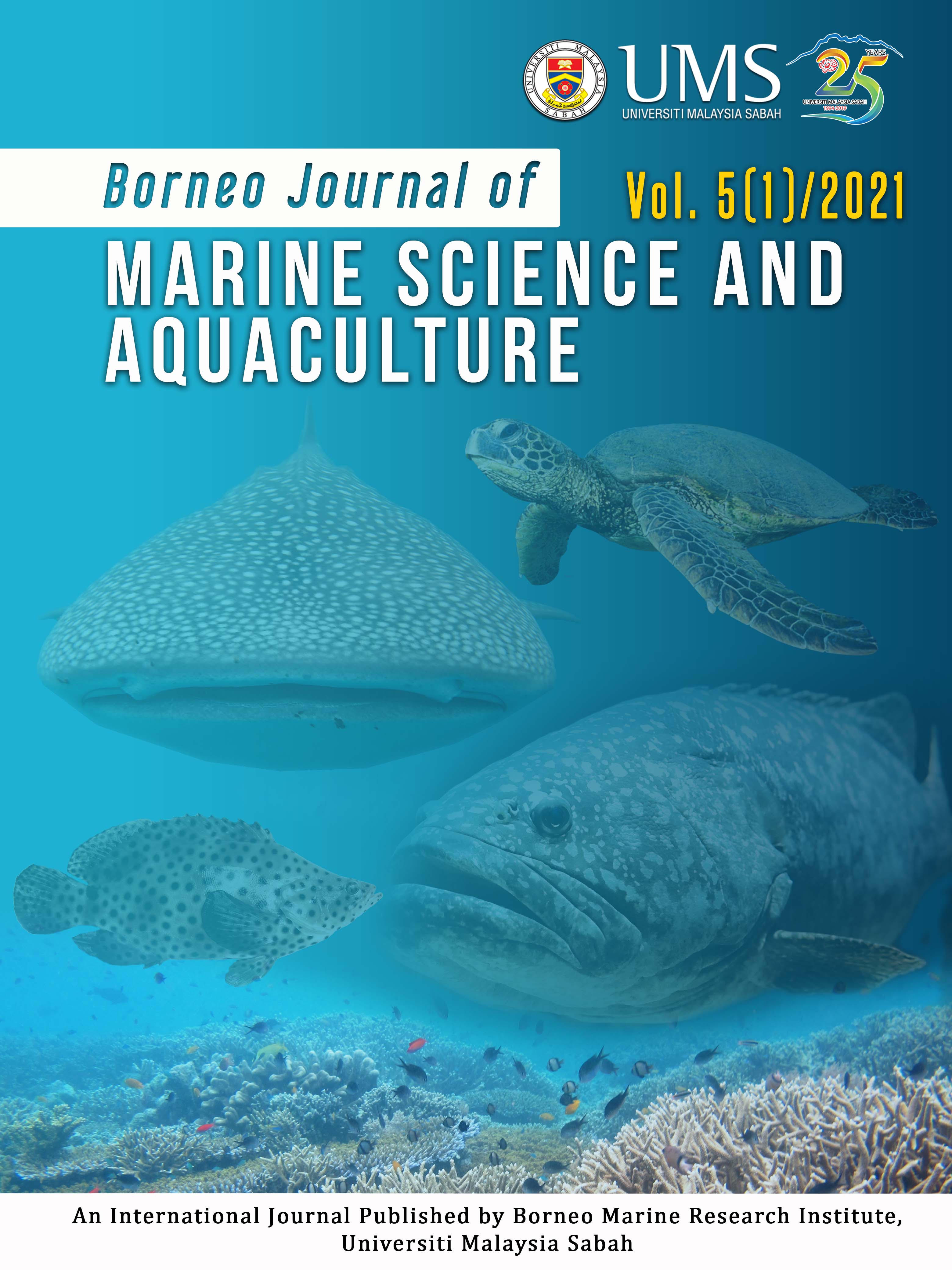Characteristics of surface currents in Manado Bay, North Sulawesi, Indonesia
DOI:
https://doi.org/10.51200/bjomsa.v5i1.2719Keywords:
Sea Surface current, Monsoonal Wind, DELFT3D, Manado BayAbstract
Manado Bay is a complex waterway located in Manado City, North Sulawesi, Indonesia. It is an entry point for the Indonesia Trough-Flow, and its circulation is affected by the seasonal winds. Manado City has no debris net on its river estuaries. Therefore, marine debris can easily be carried away by the ocean currents and accumulate in the tourism areas located along the coast of Manado Bay. Consequently, it is important to study the sea surface current circulation in Manado Bay to deal with marine debris accumulation. In the present study, we utilized the DELFT3D software to simulate the hydrodynamic circulation in Manado Bay from 2016-2017. We conducted a 2-dimension (2D) horizontal hydrodynamic simulation using tidal and wind forcing from European Centre for Medium-Range Weather (ECMWF). The simulation results indicate that the change in bathymetry and wind affect the sea surface currents. During the summer monsoon (June-August), the sea surface current flows from the northeast to the southwest with an average speed of 1.1 cm s-1. On the contrary, during the transitional monsoon 1 (September-November), the sea surface current flows from the southeast to the northwest with an average speed of 1.3 cm s-1. Meanwhile, in the winter monsoon (December-February), the sea surface current originated from the southwest flows to the east with an average velocity of 1.9 cm s-1. Then, it moves from west to east during transitional monsoon 2 (March-May) with an average speed of 1.5 cm s-1. The current speed increases whenthe water enters the strait between the Bunaken Islands due to refraction, diffraction, and shallowing effect. As current flows toward the shallower area, the current speed increases, compensating the water column reduction.
References
Ali, M., Mihardja, D.K. & Hadi, S. (1994). Ocean Tides. Bandung Institute of Technology, Bandung
Dean, RG and RA Dalrymple (1991). Water Wave Mechanics for Engineers and Scientists. World Scientific Publishing Co. Pte. Ltd, Singapore
Deltares Team (2018). DELFT3D User manual. Delft University of Technology, Netherlands.
Geyer, W.R. (1997). Influence of wind on dynamics and flushing of shallow estuaries. Estuarine, Coastal and Shelf Science 44 (6): 713-722
Holthuijsen, L. (2007). Wave in ocean and coastal Waters, Cambridge University Press, New York
Kalangi, P.N.I. (2000). Surface divergence in Port Phillip Bay. Journal of the Faculty of Fisheries. Unsrat II (1): 34-38.
Knauss, J.A. (1997). Introduction to Physical Oceanography. Prentice Hall, Upper Sadle River.
Lewis, R. (1997). Dispersion in Estuaries and Coastal Waters. Wiley, Chichester
Narahawarin, S. A., Djamaluddin, R., & Angmalisang, P. (2013). Characteristics Of Coastal Current In Sario Tumpaan Waters-Manado Bay. Journal of Coastal and Tropical Seas.
Radjawane, I. M., & Hadipoetranto, P.P. (2014). Characteristics of Water Mass in the Branching of Indonesian Trans-Flow in Sangihe Talaud Waters Using 2010 Satal Index data, Journal of Tropical Marine Science and Technology, Vol. 6, No. 2, 525-536.
Tatanging, D.Y., Luasunaung, A., Modaso, V.O., Kalangi, P.N., Masengi, K.W., and Kumajas, H.J. (2019). Flow Of Lagrangian Around Fads Of Manado Bay Center. Journal of Capture Fisheries Science and Technology, 26-32.
Wyrtki, K. (1961). Physical oceanography of Southeast Asian waters. Naga report.






